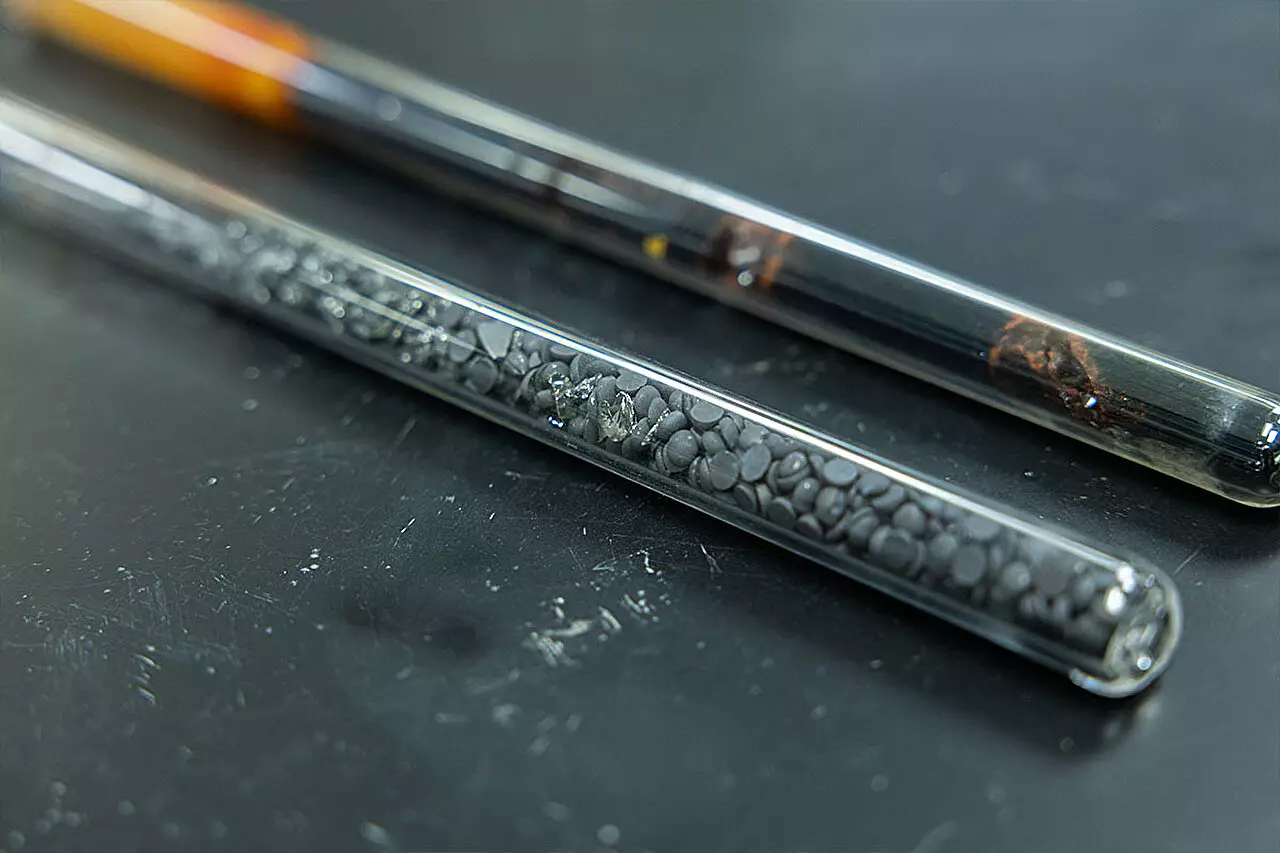As we forge ahead into an era dominated by technology and innovation, the marriage of science fiction and reality grows closer. One of the most promising developments in this realm is self-healing glass, a topic that recently captured the interest of researchers at the University of Central Florida (UCF). Their groundbreaking work centers around chalcogenide glass, which boasts the exciting capability to repair itself after damage incurred from gamma radiation exposure. This novel research, conducted in collaboration with esteemed colleagues at Clemson University and MIT, presents not only a thrilling advance in material science but also opens up new avenues for applications that stretch far beyond our current understanding.
Chalcogenide glasses, composed of elements like sulfur, selenium, and tellurium—with additions such as germanium or arsenic—have shown exceptional optical properties. Their unique composition allows them to operate effectively in applications ranging from sensors to infrared lenses. The current wave of interest in self-healing capabilities is particularly pertinent due to how these materials can endure extreme environments, such as those found in space travel or radioactive settings. The implications are monumental and could significantly enhance the longevity and effectiveness of critical scientific instruments.
Understanding the Self-Healing Mechanism
The term “self-healing” might evoke thoughts of fictional technologies like those seen in sci-fi epics, but the underlying scientific principles are impressively tangible. At the core of this property lies a unique bond structure within the material, characterized by the use of larger atoms that form relatively weak bonds. This intricate framework allows the glass to absorb and react to radiation damage. Upon experiencing gamma radiation, the bonds may become distorted or even broken; however, this material possesses the remarkable ability to “relax” and reconfigure itself over time under standard room temperature conditions.
Kathleen Richardson, a leading professor at UCF, describes the process as akin to stretching a rubber band—once it’s released, it returns to its original shape. Understanding this mechanism is pivotal not just for enhancing chalcogenide glass but also for paving the way for exploring similar properties in other materials. Indeed, researchers predict that mastering these self-healing processes could revolutionize a range of industries, including telecommunications, aerospace, and healthcare.
Potential Applications and Market Needs
The appetite for innovative materials like chalcogenide glass stems significantly from a market trend pushing for alternatives to increasingly scarce and costly traditional materials, such as germanium. As conventional products dwindle and prices skyrocket, industries are now scrambling to discover materials that can offer equivalent optical transparency and performance. This transition opens doors for chalcogenide glasses, providing opportunities for engineering tailored solutions suitable for specialized applications.
Richardson highlights the economic implications as well: “As people look for replacements for traditional materials, there’s a growing acceptance and recognition of these engineered glasses.” Such recognition may not only lead to widespread adoption in existing sectors but potentially revolutionize emerging fields focused on optical technologies.
The Collaborative Spirit of Research
One of the unparalleled strengths of the research conducted at UCF is its collaborative essence. Engaging a network of collaborators from various institutions accelerates innovation and deepens understanding beyond isolated explorations. Myungkoo Kang, a former UCF scientist now shaping the future at Alfred University, underscores the enriched experience that collaborative environments provide. The interplay of different expertise, the iterative process of sharing samples back and forth, and pooling resources have fostered a rich ground for scientific discovery.
Moreover, this endeavor mirrors the essence of modern scientific research—connectedness and unity across academic boundaries. The knowledge obtained from the self-healing properties of chalcogenide glass not only benefits Richardson and her team but also holds the promise for widespread advancements across the field.
Looking to the Future of Optical Innovations
While the initial focus has been on understanding gamma-radiation-induced changes, the future prospects for chalcogenide glasses are tantalizing. The fundamental research serves as a launching pad toward creating ultra-fast, lightweight optical platforms. Kang is optimistic about his new research group’s initiatives aimed at fabricating advanced ceramics that could harness self-healing properties, ultimately contributing toward futuristic applications in various scientific fronts.
In the grand tapestry of scientific achievement, the exploration of self-healing materials stands out as a vibrant thread that intertwines resilience with innovation. As the realms of material science, engineering, and technology continue to evolve, findings from UCF and its partners promise not only to expand our capabilities but also to inspire future generations of researchers and industry leaders aiming to push the boundaries of what’s possible.

